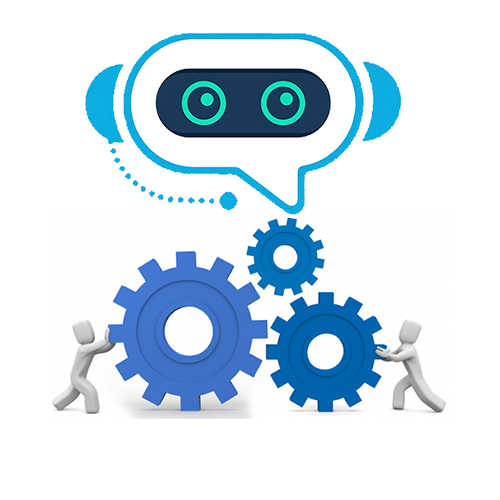 Chatbot implementation
Chatbot implementation
Programming & Tech
Chatbot implementation
Product Info
A chatbot is a computer program designed to simulate human conversation. It uses natural language processing (NLP) to understand and respond to user inputs, providing information, assistance, or engaging in discussions on various topics. Chatbots can be implemented for customer support, information retrieval, entertainment, and more, using frameworks like Dialogflow, Microsoft Bot Framework, or custom development. They require data training, backend logic, and deployment to messaging platforms, with ongoing testing and updates to ensure effective communication.Description
-
Implementing a chatbot involves creating a software application that can understand and generate human-like text-based conversations. Here's a high-level overview of the steps you would typically follow to implement a chatbot:
-
Define the Purpose and Scope: Determine the specific purpose of your chatbot. Is it for customer support, information retrieval, entertainment, or something else? Define the scope of topics and interactions your chatbot will handle.
-
Choose a Framework or Platform: There are various frameworks and platforms available that can simplify chatbot development. Some popular options include:
- Dialogflow: Google's natural language processing platform.
- Microsoft Bot Framework: A platform that supports multiple messaging channels.
- IBM Watson Assistant: IBM's AI-powered assistant service.
- Rasa: An open-source framework for building conversational AI.
- Custom Development: You can build a chatbot from scratch using programming languages like Python and libraries like NLTK or spaCy.
-
Gather and Prepare Data: Your chatbot will need a training dataset to learn how to understand and generate responses. Prepare a dataset of example conversations related to your chatbot's purpose. Include a variety of possible user inputs and corresponding bot responses.
-
Natural Language Processing (NLP): NLP is a crucial component of chatbots. It involves processing and understanding human language. Most frameworks provide NLP capabilities to understand user intents, entities, and contexts.
-
Create Intents and Entities: Define the intents (user purposes) and entities (important information) your chatbot needs to recognize. For instance, in a weather chatbot, an intent could be "GetWeather" and entities could be "location" and "date."
-
Train the Model: Use your chosen framework's tools to train the chatbot's NLP model using your dataset. This helps the chatbot learn how to map user inputs to intents and entities.
-
Design Conversation Flow: Define the conversation flow by creating dialog trees or designing a state machine. This determines how the chatbot responds to different user inputs and maintains context across the conversation.
-
Implement Backend Logic: Write the backend logic that processes user input, matches it to intents and entities, and generates appropriate responses. This may involve integrating with external APIs for data retrieval.
-
Deploy the Chatbot: Deploy the chatbot to a platform or messaging channels (like Facebook Messenger, Slack, a website, etc.) where users can interact with it.
-
Test and Refine: Test the chatbot extensively to identify and fix any issues, refine its responses, and improve its performance over time. Collect user feedback to iteratively improve the chatbot.
-
Monitor and Update: Continuously monitor the chatbot's performance and user interactions. Update the chatbot's training data, intents, entities, and responses as needed to keep it relevant and effective.
Remember that creating an effective chatbot involves an ongoing process of refinement and improvement. The complexity of your chatbot's implementation will depend on its purpose and the features you want to include.
-

